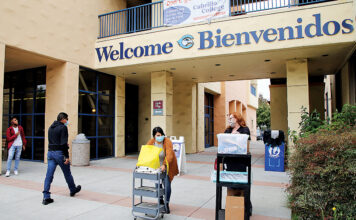We mentioned in our January article that many people were likely to be surprised that come tax filing time the refund that they have come to expect every year in the spring has evaporated, or worse yet, they now owe money to the IRS! It appears that this prediction is turning out to be true as the IRS has stated that the average refund is down over 8 percent from last year. We thought this would be a good time to review where your refund may have gone as well as ideas of where to use your refund if you do end up with one this year.
Where’s my refund?
If you consistently receive a refund and this year find that your refund is a lot smaller or you owe the IRS, there are a couple of likely reasons. The 2018 tax year is the first tax year under the new Tax Cuts and Jobs Act. In our previous articles we’ve reviewed some of the major changes that took place. However, what many people failed to realize was that the IRS updated withholding tables in February 2018 to reflect the new tax law, yet many employees didn’t check to see that their withholding selections were still up to date in light of the tax law changes. So it’s likely a lot of people who normally receive refunds when they file their returns instead received their refund in the form of less tax withholding on their paystub throughout 2018.
Another area in the Tax Cuts and Jobs Act that changed substantially was itemized deductions. High tax states like California are likely to have taxpayers who easily reach the new $10,000 cap on the SALT deduction. Before 2018, taxpayers who itemized their deductions could deduct the amount paid in state income taxes as well as property taxes. Now the limit is $10,000 total for both taxes combined. Also, you can no longer deduct unreimbursed employee expenses.
If you find that you owe the IRS this year, work with a qualified tax professional to see how to adjust your withholding elections accordingly.
Emergency fund
If you find that this year you will receive a refund, be sure to put it to good use! If you don’t have an emergency fund established or it’s running low, consider using your refund to start on or add to one. It’s not a question of if unexpected expenses are going to come up, but when unexpected expenses are going to come up. Having an emergency fund will allow you to pay for those unexpected expenses so you don’t have to resort to more expensive options like using a credit card.
Pay Down Consumer Debts
If you’re carrying high interest credit card balances, consider using part of your refund to pay down or pay off those balances. Consider paying down the balance with the highest interest first. Or if you have a smaller balance that you can completely extinguish, consider paying that off.
Children’s college fund
If you’ve been putting off starting a college fund for your child, consider opening one up and using part of your refund as seed money. Work with a qualified professional who can walk you through the types of accounts that are available and the pros and cons associated with them.
Remember that a tax refund is not a gift from the government. Far from it! It is simply a return to you of your own money that you over deposited throughout the year through tax withholding or estimated tax payments. If your refund is consistently large, it would be a good idea to evaluate how much you are withholding versus how much you are likely to owe and make adjustments accordingly.
Gary E. Croxall, CFP®
Registered Principal of LPL
Soren E. Croxall, CFP®
Registered Representative of LPL
Securities and Advisory Services offered through LPL Financial, a Registered Investment Advisor. Member FINRA & SIPC. LPL Financial and Croxall Capital Planning do not provide tax or legal advice. The opinions voiced in this material are for general information only and are not intended to provide specific advice or recommendations for any individual.











